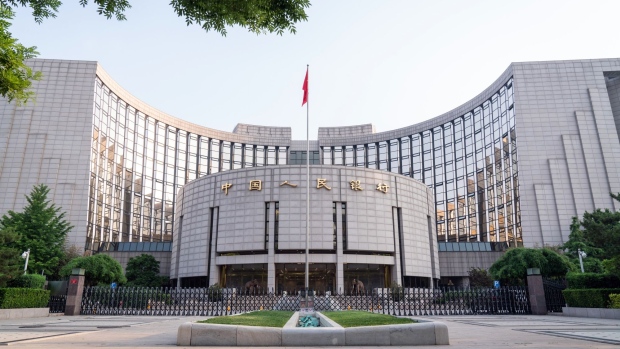Oct 8, 2021
China Will Keep Pushing Interest Rate Reform, PBOC Official Says
, Bloomberg News

(Bloomberg) -- China’s central bank will continue to push for the reform of its benchmark loan rate and make deposit rates more market-based, according to a senior official.
The People’s Bank of China will enhance the quality of banks’ quotes used to derive the loan prime rate, which was revamped in 2019 to become the de facto benchmark funding cost in the economy, Deputy Governor Liu Guoqiang said in an article Friday. The central bank will publish historical quotes and make it competitive for banks to become qualified to provide quotes, he said.
“This will make the transmission from policy rate to loan and deposit rates via the market more smooth,” Liu said in the article published by China Finance, a magazine ran by the central bank.
The PBOC will let interest rates play a key role in allocating financial resources, and encourage more resources to flow to small, micro-sized firms and private companies, he said.
The central bank has kept the LPR and policy rates steady since cutting them at the height of the pandemic in early 2020, as it seeks to contain rising debt and financial risks in a slowing economy.
The move to adjust how banks can set deposit rates earlier this year was to contain “irrational competition” among lenders, Liu said. Some banks used unreasonably high deposit rates to lure customers in order to expand or fill their liquidity gap, which forced banks in normal operations to also hike deposit rates, according to him.
The LPR has become more market-oriented since the reform began, Liu said. The downward trend in LPR has led to a fall in the weighted average of corporate loan rates to 4.62% by August, which is 0.7 percentage points lower than the level in July 2019 when the reform started, he said.
The LPR is now derived on the basis of monthly quotes from 18 banks, which include state-owned, private and foreign lenders, Liu said. The banks are asked to provide a quote based on a spread above the medium-term lending facility rate, the rate of the PBOC’s key policy loan, and this helps reflect markets’ demand and supply conditions, he said.
©2021 Bloomberg L.P.